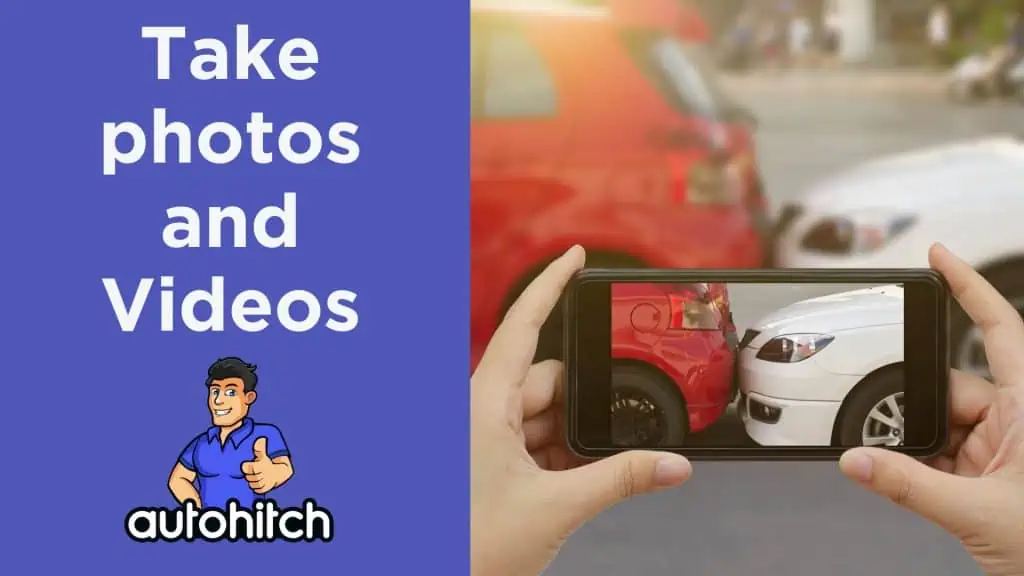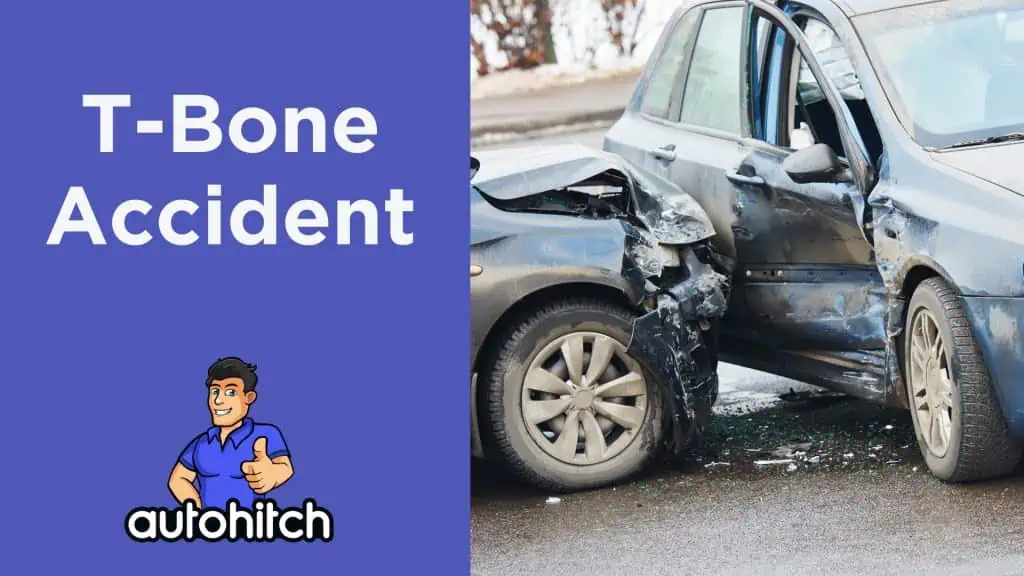Car accidents can be a stressful and overwhelming experience, but as crazy of a time as it is, it’s absolutely essential that you know how to describe a car accident for insurance companies.
This blog post will guide you through key elements that should be included in your car accident description, provide tips for writing clear and concise details, and offer examples of different types of accidents to help you create a comprehensive report.
Key Takeaways
- A car accident description should include details such as the date, time, and location for insurance claims to help assess liability accurately.
- Using clear and concise language, taking photos or videos, and gathering important information like contact details and witnesses’ accounts can make a car accident report more accurate.
- It’s crucial to include information about weather and road conditions surrounding the incident when describing an accident for insurance claims.
- Injuries sustained in a collision should also be taken seriously when seeking compensation for damages done by careless drivers on the road.
Related Articles to Read:
- Can You Drive A Car Once The Airbags Have Deployed
- What Happens If You Crash A Financed Car With Insurance
- Who Gets the Insurance Check When a Car is Totaled?
Table of Contents
Key Details to Include in Descriptions of Car Accidents
1. Key Details Such As Date, Time, And Location
One of the most crucial aspects of describing a car accident for insurance purposes is providing key details, such as the date, time, and location. These details can significantly impact how your claim is processed and may even affect the settlement you receive.
Example Statements:
- “The accident occurred on Monday, April 3rd, 2024 at approximately 3:17 PM.”
- “The location was the intersection of Main Street and Oak Avenue in downtown Chicago.”
Likewise, offering accurate information about the location of the accident helps insurers determine fault more efficiently, as laws governing right-of-way might vary between states or countries.
Keep in mind that even minor discrepancies can raise suspicions and lead to delays in claims processing; therefore, it’s essential to be precise when reporting these vital details.
2. Describe the Sequence of Events
Your Actions Before the Accident
- What you were doing just prior (driving straight, turning, stopped at a red light, etc.)
- The speed you were traveling.
- Whether you had your turn signal on to indicate a turn or lane change.
Example: “I was driving straight through the intersection of Main and Oak in the inner lane, traveling approximately 30 mph with my green light.” “My turn signal was not on, as I intended to continue straight.”
How the Accident Occurred
- Describe the actions of the other vehicle(s) involved that led to the accident.
- The direction each vehicle was traveling.
- If one vehicle struck another, which areas of the vehicles collided (front, rear, side, etc.)
- Any evasive actions taken by either driver to try to avoid the collision.
Example: “Mr. Smith’s Ford truck was traveling westbound on Oak Ave and attempted to make a left turn onto southbound Main St. He failed to yield to my vehicle going through the intersection and struck the front driver’s side of my car. I braked hard but could not avoid the collision due to his failure to yield on the left turn.”
After the Impact
- How far the vehicles traveled after the initial impact.
- Whether any vehicles left the roadway or struck any objects.
- If a vehicle overturned or spun out of control.
- Any smoke, fire, or debris in the roadway as a result.
Example: “The impact spun my vehicle about 180 degrees, leaving me facing eastbound on Oak Ave.”
3. Weather And Road Conditions
Weather and road conditions play a significant role in car accidents, often contributing to the severity or likelihood of a collision. It’s important to provide accurate information about these factors when describing an accident for insurance claims.
- Describe the roadway conditions (dry, wet, icy, under construction, etc.)
- Note the weather at the time (clear, raining, snowing, fog, etc.)
- Indicate lighting conditions (daylight, dusk, dark with or without streetlights, etc.)
- Mention any obstructions, debris, or hazards in the road.
Example Descriptions:
- “The roadway was dry and clear, as it was a sunny day with no precipitation.”
- “However, there was construction on Main St with cones closing off the curb lane for both directions of travel.”
A detailed description helps paint an accurate picture of what transpired during the incident.
4. Injuries Sustained
Injuries sustained in a car accident can range from minor cuts and bruises to serious, life-altering injuries. Some of the most common injuries include whiplash, fractured bones, sprains, and head trauma.
- For each occupant in all vehicles involved, note any visible injuries (bleeding, limping, complaints of pain, etc.)
- Indicate if any occupants had to be extricated from the vehicle(s) by emergency responders.
- Note if any occupants were transported from the scene by ambulance for medical treatment.
- Include all medical bills and expenses related to your injuries
- Include any lost wages due to time off work during recovery
Example Statement: “I suffered a laceration to my forehead from the deployed airbag. The front end of my vehicle was heavily damaged.”
5. Damage To All Vehicles Involved
- Describe the type and location of damage to each vehicle (crushed front-end, rear quarter panel damage, deployed airbags, etc.)
- Take clear photos from multiple angles showing the extent of the damage.
- Note if any vehicle had to be towed from the scene due to disabling damage.
Example Statements:
- “The front driver’s side of my Honda Accord was heavily crushed inward from the impact.”
- “Mr. Smith’s truck had disabling front-end damage, with the engine partially exposed.”
- “Both vehicles had to be towed from the scene due to the extent of the damage.”
6. People & Parties Involved
- For the other driver(s), collect their full name, address, phone number, driver’s license number, license plate number, make/model/year of their vehicle, and insurance details (company and policy number).
- If there were any passengers in the other vehicle(s), get their names and contact information as well.
Additional Evidence
Witness Information
- Full names and contact information for any witnesses not involved in the accident.
- A brief summary of what each witness saw or heard related to the accident.
Example Statement: “There was one witness at the scene – Sarah Williams (phone 312-555-8765). Ms. Williams stated she saw Mr. Smith fail to yield and strike my vehicle as I went through the green light.”
Police Response
- Indicate if police responded to the scene and filed an official report.
- Get the name, badge number, and department for any responding officers.
- Request a copy of the police report, which may have additional details.
Example: “Officers Brian Thompson and Melissa Garcia from the Chicago Police Department responded to the scene and filed an official report, case #20245678.”
Tips For Writing A Clear Car Accident Description For Insurance Claims
When writing a car accident description for insurance, it is crucial to stick to the facts and avoid speculating. Use clear and concise language, take photos or videos, and gather important information like contact details and witnesses’ accounts.
These tips will make your car accident report more accurate, which can lead to a better outcome for your claim.
Stick To The Facts And Avoid Speculation
Key Points:
- Stick to the facts about what you saw happen, avoid speculating on fault.
- Do not make any statements about potential injuries until evaluated by a doctor.
- Request to provide a full statement after speaking with your insurance company.
Example Statements:
- “I informed the officers that I had the green light and was going straight through the intersection when struck.”
- “I did not make any statements about potential injuries, only that my head was bleeding from the airbag deployment.”
When writing a description of a car accident for insurance claims, focus on the facts and avoid speculation as much as possible.
While it may be tempting to speculate about who was at fault or what could have happened differently, this can actually harm your claim in the long run.
Instead, make sure that you stick only to the details of what happened at the time of the accident – where and when it occurred, which vehicles were involved, the weather conditions at the time, and any injuries sustained by drivers or passengers.
For example, if you saw another driver texting while driving just before an accident occurred but didn’t witness their distracted driving firsthand – don’t include this information in your report to your insurer.
Use Clear And Concise Language
When writing a car accident description for an insurance claim, it is important to use clear and concise language. Avoid using jargon or technical terms that may complicate the explanation of what happened.
Stick to straightforward language that conveys exactly what occurred in the accident. For example, instead of saying, “The vehicle collided with me,” you can say, “The other driver’s car hit mine.” Additionally, avoid adding unnecessary details or information that does not relate to the accident, as it can make your statement confusing and harder to follow.
Remember that the goal is to provide a factual account of the incident in a manner that is easy for others (such as claims adjusters) to understand.
Take Photos And Videos

Capturing the details of a car accident in photos or videos is a crucial step to take when reporting an incident to your insurance company. Images and recordings can help accurately document damage, injuries sustained, and other important factors that could play a role in determining fault.
For instance, taking pictures of skid marks on the road or property damage caused by the collision can aid in building a strong case for insurance negotiations.
Even if you believe there’s no significant damage from the accident, it’s essential to take pictures anyway. Sometimes what appears like minor damages initially can lead to serious issues later on down the line.
Gather Important Information
To file an accurate and successful car insurance claim, you need to gather important information about the accident. This includes the names and contact details of everyone involved in the crash, including witnesses.
Take photos of both vehicles, license plates, and any damage caused by the collision. Capture images of skid marks, street signs or traffic lights at or near the scene if possible.
Make sure to collect all relevant driver’s license numbers and insurance policy information from other drivers involved in the incident.
Also, remember that writing down everything you can remember as soon after an accident as possible is very helpful when filing an auto insurance claim later on: time & date; weather conditions (foggy/ raining etc); how fast cars were traveling; what direction each vehicle was driving in before impact; brief summary of injuries sustained by anyone inside either car are some things one should not forget to note while gathering evidence for a car accident claim for insurance agencies.
Examples Of How To Describe A Car Accident For Insurance Claims
Provide detailed information about the car accident, such as what happened before, during, and after it occurred. Use clear language to describe how both vehicles collided and include any significant factors like the weather or road conditions that may have contributed to the crash.
Rear-end Collision
Rear-end collisions are one of the most common types of car accidents, accounting for almost a third of all crashes. These incidents occur when a vehicle strikes another from behind, often causing significant damage to both cars and injuries to the passengers.
While it’s commonly assumed that the driver who does the rear-ending is at fault for the accident, liability can be more complicated than that. Sometimes, factors like sudden stops or mechanical failures in the lead vehicle can play a role in determining who is responsible for damages.
Keywords: Report car accident to insurance, Rear-end collision explanation
T-bone Accident

A T-bone accident is a type of car collision that occurs when one vehicle crashes into the side of another at an angle, forming a “T” shape. These types of accidents can occur at intersections, parking lots, or in traffic and often result in serious injuries due to the forceful impact.
Injuries associated with T-bone accidents can include whiplash, head trauma such as traumatic brain injuries (TBIs), spinal cord damage, broken bones, and even death.
After being involved in a T-bone car accident, individuals should seek medical attention immediately and gather evidence for their insurance claim by taking photos and videos of the scene.
It’s important to work with experienced legal teams who understand how to navigate complex insurance claims processes and fight for maximum compensation.
Hit And Run
If you are involved in a hit-and-run accident, it is important to follow certain steps to ensure that you can file an insurance claim. First, call the police immediately and provide as much information as possible about the other driver and their vehicle.
Take photos of the damage to your car and any visible details of the other car.
It’s also important to contact your insurance company right away so they can guide you through the claims process. Depending on your policy, you may have coverage for hit-and-run accidents even if the other driver cannot be identified or located.
Conclusion
In conclusion, knowing how to describe a car accident for insurance claims is crucial. Providing clear and concise information can help you get the most out of your claim.
Stick to the facts, provide photos and videos, and gather important information at the scene. It’s also essential to stay calm when talking to your insurer and avoid admitting fault.



